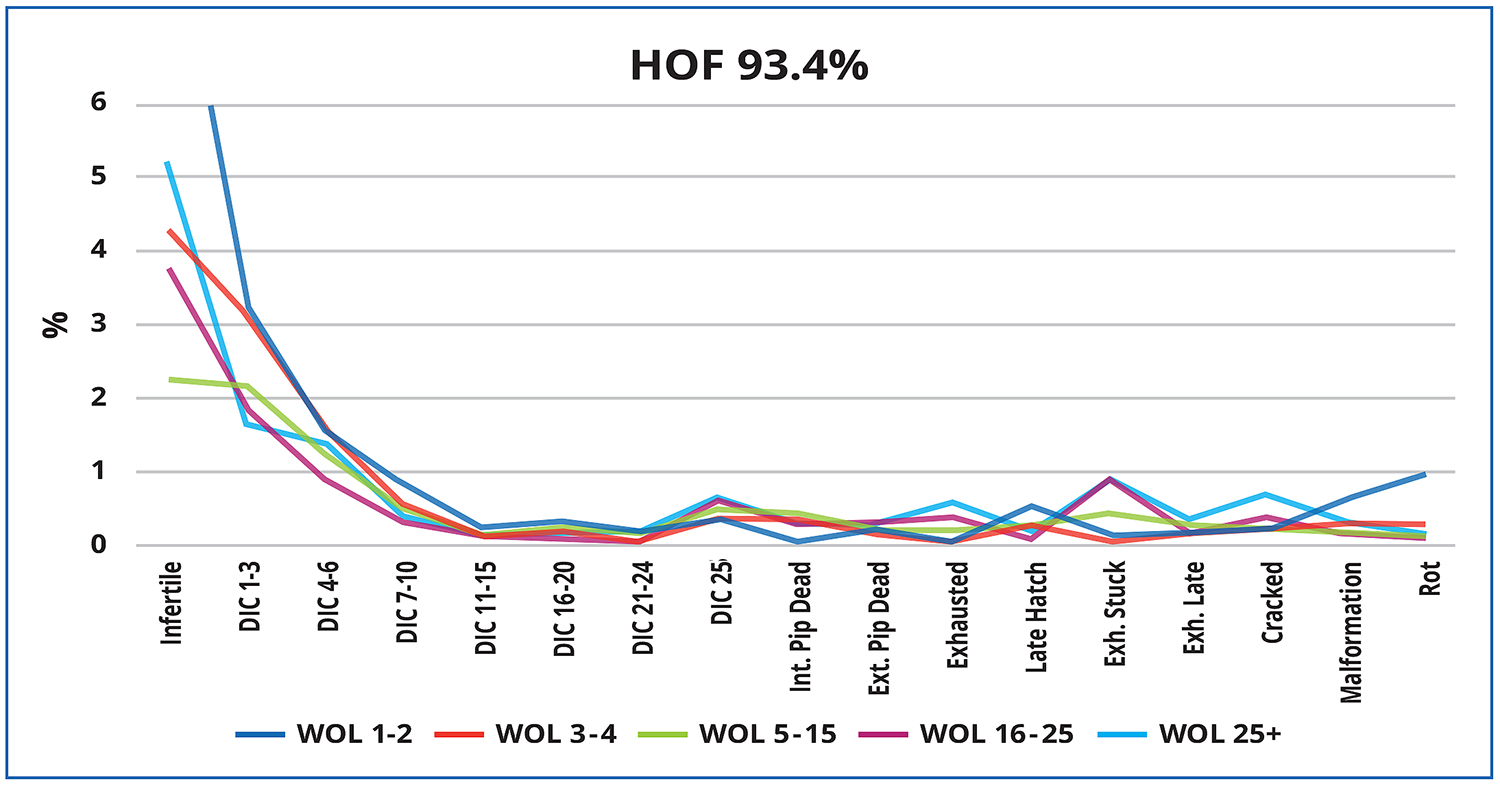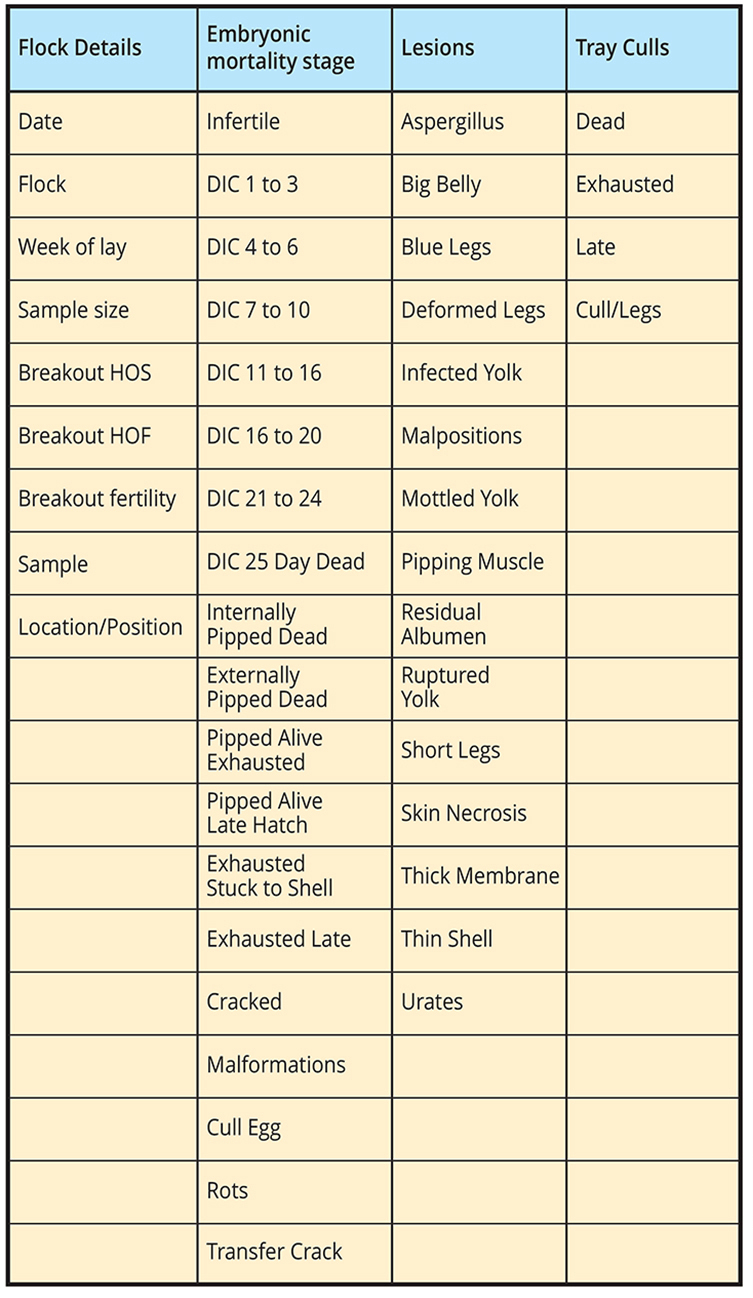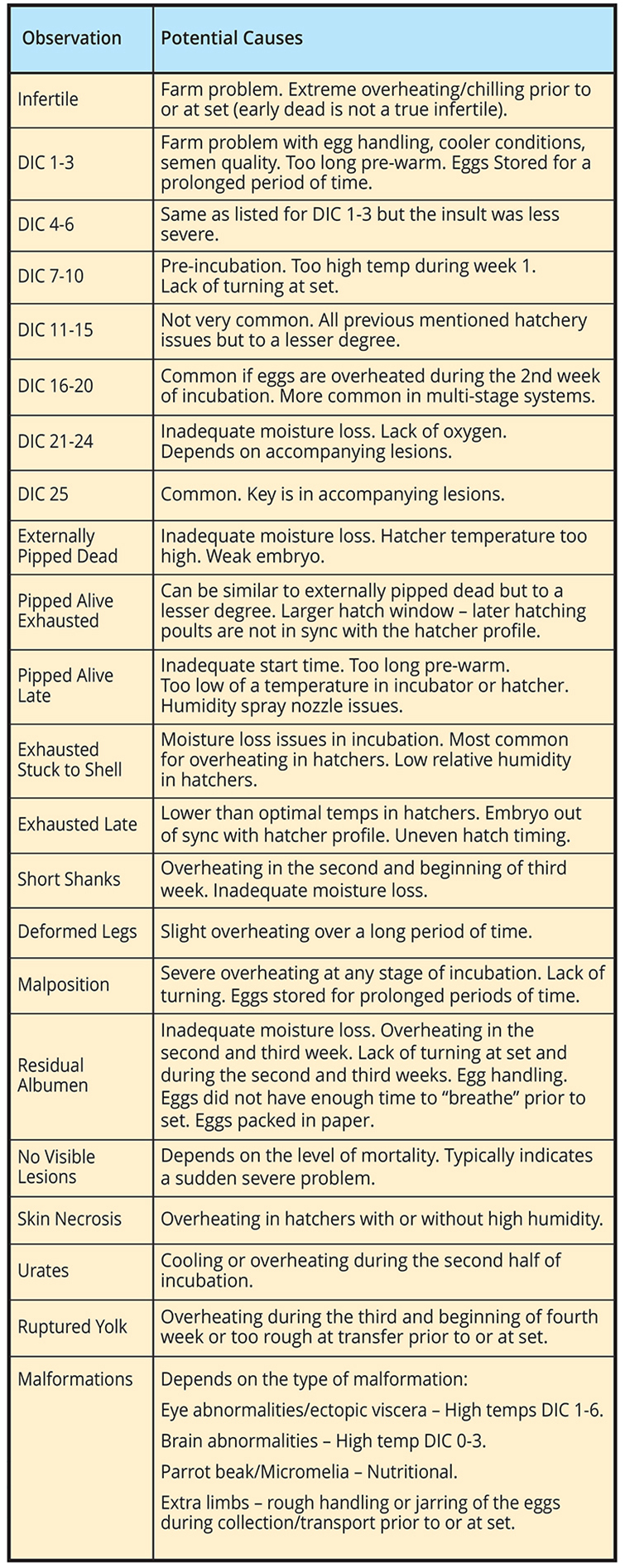Turkey hatcheries provide a highly controlled environment which maximizes the successful hatching of healthy poults. Constant monitoring of hatchability and breakouts of unhatched eggs helps hatchery managers maintain high levels of poult survival, welfare and quality.
Egg breakout or hatch residue analysis is a powerful diagnostic tool for hatcheries. Breakouts can be used to aid troubleshooting, establishing trends, or optimize hatch results. The egg tells a story of the timeline of events from when the egg is formed inside the hen and all the way through the hatching process. Egg breakouts do not substitute looking at the birds, but provide an important insight into breeder nutrition, health, egg handling, incubating, and hatching parameters. For example close attention to egg breakouts can indicate toxin or nutritional deficiencies before clinical signs are seen in the breeder flock.
When used in conjunction with other hatchery tools, detailed breakouts can result in significant improvements. Nevertheless, they are often overlooked due to a lack of understanding of their importance, inability to interpret them, or lack of time and resources.
Most hatcheries have some sort of hatch residue breakout process but it can be too simplistic. The programme may only consist of looking at the “poor hatches”, only look at one tray, or use generic breakout sheets. In order to establish trends, track embryonic changes, or identify potential areas to improve hatch, you must examine the breakouts thoroughly and frequently. In order to understand the “poor hatches”, you must understand what embryonic mortality is in the “good hatches” and have a base understanding as to what is “normal” for specific lines and for specific weeks in lay.
Once “normal” has been established (Figure 1) and expectations are set, slight variations between flocks and hatches can be readily seen. These variations help guide us how to optimize hatch and poult quality in each scenario.
 Table 1. Embryonic mortality classes for a flock with a good hatch of fertile (HOF = Hatch of Fertile) of 93.4%. The lines show the results of the hatch breakouts by week of lay (WOL= Week of Lay) during the flock lifetime.
Table 1. Embryonic mortality classes for a flock with a good hatch of fertile (HOF = Hatch of Fertile) of 93.4%. The lines show the results of the hatch breakouts by week of lay (WOL= Week of Lay) during the flock lifetime. Examination of one tray is insufficient to give an accurate repre-sentation of what is happening in a machine or flock. Breakouts will change based on location in the egg store, incubator, and or hatcher. One tray is not a large enough sample size to account for all inherent hatchery variables. For example if you breakout one tray from the same location every hatch, you will miss the bigger picture. It may contain late hatches because this is a cool spot in the incubator. Problems could be overlooked with the rest of the machine exhibiting classic signs of overheating, such as increased late dead and short deformed legs.
Breakout profiles change alongside genetic development of breeds. Over time, genetic progress can affect embryonic develop-ment and incubation requirements. These small changes will go unnoticed if routine breakout.
Many hatcheries use a generic breakout sheet that typically characterizes week of embryonic death and a few other categories unrelated to incubation, such as cracked or rots. The key to unlocking the potential diagnostic tool of egg break-outs lies in the detail of the breakout results. Figure 2 shows the components that should be included in a detailed breakout form.
The more detailed and descriptive the breakouts can be, the more useful the information becomes. For example, simple classification of embryonic mortality as late dead without further details could be attributed to a wide range of causes: incubator or hatcher issue, transfer process problem, poor egg handling, or it may even be “normal” for this particular week of lay. If you take the same set of breakouts, classify them as an internally pipped dead with residual albumen, deformed legs, and short legs, a clearer picture is revealed which can be used to tackle the root of the issue and progress can be made.
Similar to establishing normal patterns of embryonic mortality, patterns of normal embryonic lesions should also be determined. Breakout lesions will also vary based on flock and week of lay. The lesions provide additional information with on how to tackle the individual flock issues. Figure 2. Components to be included in a detailed breakout analysis (Source: Aviagen Turkeys Management Guidelines for Turkey hatcheries), DIC = Day in cycle.

Causes of abnormal breakouts are diverse, ranging from environ-mental factors through to breeder flock nutrition, fertility, and health, egg handling, as well as incubator and hatcher conditions. It is not only enough to be able to identify the stage in embryonic mortality, lesions, and abnormal breakouts, you must be able to interpret what the data is telling you (Figure 3).

Egg breakout investment return
Egg breakouts take time and resources but are an essential hatchery operation to identify normal and abnormal patterns of development. Whilst the benefit may not be initially obvious, it will pay significant dividends when problems emerge and they assist in a swift diagnosis and correction. Therefore, a concerted effort must be made to ensure breakouts are being done frequently and thoroughly. The opportunity is in the trends and details. Nowhere else can anyone find a record of events from embryo formation to hatch. Breakouts will tell you all that you need to know, you just need to listen.
